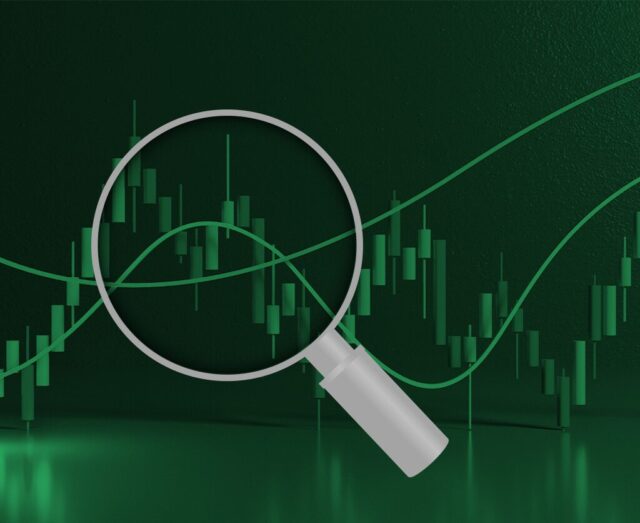Scalping is a trading technique that seeks to take advantage of small price changes in highly liquid instruments over short periods. While some see it as indicative of a “day trader” mindset, those who have learned to apply it strategically understand that it can uncover valuable short-term opportunities that other market participants may overlook.
This article explores several technical indicators that scalp traders have leveraged for decades to identify high-probability entry and exit points amidst the noise and volatility of short time frames.
By gaining familiarity with oscillators like the Relative Strength Index and patterns revealed by tools like Heiken Ashi candles or Renko charts, those curious about this approach will better understand how structure can be imposed even on rapid market fluctuations.
Introduction to Scalping Indicators and Their Role in The Stock Market

Scalping indicators are technical tools traders use to identify short-term opportunities in the stock market. They help analyze and interpret market trends, patterns, and movements to make quick decisions and capitalize on small price changes. These indicators can be applied to highly liquid instruments such as stocks, currencies, or commodities.
The goal of scalping is to take advantage of the small price fluctuations that occur throughout the day rather than trying to profit from long-term trends. It requires a high level of skill and discipline and a deep understanding of the market and its dynamics.
Scalping indicators assist traders in identifying entry and exit points by filtering out noise and highlighting potential trade opportunities. They can also help to manage risk by indicating when to cut losses or take profits. Click here to learn more about the basics of scalping.
Types of Scalping Indicators

There are many different scalping indicators, each with unique features and benefits. Some common examples include:
Oscillators: These indicators measure the momentum and speed of price movements. They can help identify overbought and oversold conditions and potential trend reversals. Popular oscillators include the Relative Strength Index (RSI), Stochastic Oscillator, and Commodity Channel Index (CCI).
Trend indicators: These indicators are used to identify the direction of a trend and its strength. Examples include Moving Averages, Bollinger Bands, and Parabolic SAR.
Candlestick patterns: These indicators use the shape and color of candlesticks to identify potential trend reversals or continuation patterns. Some famous examples include Doji, Hammer, and Evening Star.
Chart types: Scalpers often use non-traditional chart types such as Heiken Ashi candles or Renko charts, which filter out noise and provide a clearer view of price action over short time frames.
Tips for combining multiple indicators to increase accuracy and effectiveness in scalping strategies
While each indicator may provide valuable information, combining multiple indicators can increase the accuracy and effectiveness of scalping strategies. However, it is essential to note that no “perfect” combination of indicators exists, as different market conditions may require different approaches. Here are some tips for combining indicators in a scalping strategy:

Avoid overloading: Using too many indicators can lead to conflicting signals and confusion. It is essential to select critical indicators that complement each other carefully.
Consider time frames: Indicators may behave differently when applied to different time frames. Understanding how an indicator works on various time frames and choosing accordingly is essential.
Look for confluence: Multiple indicators can provide a more robust signal when they agree. Look for instances where different indicators are pointing towards the same trade opportunity.
Avoid redundancy: Some indicators measure the same thing, so it’s important to avoid using redundant indicators that provide similar information.
Common mistakes to avoid when using scalping indicators and how to overcome them
While scalping indicators can be powerful tools, they could be more foolproof and should be used cautiously. Here are some common mistakes to avoid when using scalping indicators:
Relying too heavily on indicators: Indicators should be used to supplement market analysis, not the sole basis for trading decisions. It’s essential to consider other factors, such as market news, economic data, and overall market sentiment.
Ignoring risk management: Scalping can be a high-risk strategy, so it’s essential to have a solid risk management plan in place. It may include setting stop losses and profit targets and being disciplined enough to stick to them.
Lack of patience: Scalping requires quick decision-making and the ability to act fast, but it’s also essential to exercise patience and wait for the proper setup. Impulsive trades based on indicators alone can lead to losses.
Not testing and adapting: Scalping strategies should be tested and adapted over time, as market conditions and dynamics can change. It’s essential to review and analyze past trades to identify areas for improvement.
How Scalping Indicators Work: Understanding Their Mechanics and Application

Scalping indicators are vital for traders who focus on short-term market fluctuations. They function by analyzing past and current market data to predict potential price movements. For example, oscillators like the RSI provide insight into whether an asset is overbought or oversold, indicating potential reversal points.
Trend indicators like Moving Averages help in understanding the current market trend, aiding traders in deciding whether to buy or sell. Chart types, such as Heiken Ashi, modify traditional candlestick patterns to highlight trends more clearly.
Importance of Technical Analysis in Scalping
Technical analysis is crucial in scalping as it helps traders make quick, informed decisions. This analysis involves studying market trends, patterns, and historical data to predict future price movements.
In scalping, where decisions are made in a matter of seconds or minutes, understanding technical analysis can be the difference between profit and loss.
Developing a Scalping Strategy: Key Considerations
Developing an effective scalping strategy involves several key considerations. First, traders need to choose suitable financial instruments that are liquid and volatile enough for scalping.
Next, selecting the right time frame is critical, as scalping typically involves very short time frames like 1-minute or 5-minute charts.
Traders should also decide on the specific indicators they will use and the rules for entering and exiting trades. Testing the strategy on historical data and in a simulated environment is essential before applying it to live markets.
Staying Ahead in Fast-Paced Scalping: The Role of Technology and Tools

In the fast-paced world of scalping, technology, and advanced tools play a crucial role. High-speed internet and powerful computers allow for real-time market analysis and instant trade execution.
Trading platforms equipped with advanced charting tools and customizable indicators are essential for conducting detailed technical analysis. Automated trading systems can also be beneficial, as they can execute trades faster than humans.









